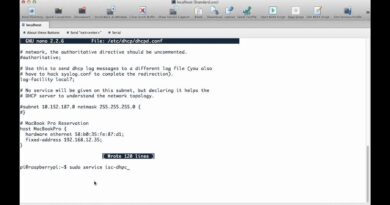how to pip install on linux
Download this code from https://codegive.com
Certainly! Installing packages using pip on Linux is a common task for Python developers. Here’s a step-by-step tutorial on how to do this:
Step 1: Open Terminal
Open your terminal application. You can usually find it in the applications menu or use the shortcut Ctrl + Alt + T to open it.
Step 2: Check Python Installation
Before using pip, ensure that Python is installed on your system. You can check the installed Python version by entering the following command:
This will display the installed Python version. If Python is not installed, you can install it using your package manager (e.g., apt for Ubuntu or yum for CentOS).
Step 3: Install pip
If pip is not already installed, you can install it using the package manager. On many Linux distributions, pip comes bundled with Python by default. However, if it’s missing, you can install it by executing:
For other distributions, you might use different commands like yum, dnf, or pacman depending on your package manager.
Step 4: Install a Package
To install a Python package using pip, use the following command:
Replace package_name with the name of the package you want to install. For example, to install the requests package, you would type:
Step 5: Verify Installation
Once the installation is complete, you can verify if the package is installed correctly by checking the installed packages:
This command will display a list of installed packages along with their versions.
Step 6: Installing a Specific Version
You can also install a specific version of a package using pip. Specify the version number after the package name with the following syntax:
For instance, to install numpy version 1.21.2, you can use:
Step 7: Upgrading a Package
To upgrade an already installed package to the latest version, you can use the –upgrade flag:
For example, to upgrade the numpy package, you would type:
Step 8: Uninstalling a Package
If you want to remove a package, you can use the uninstall command:
Replace package_name with the name of the package you want to uninstall.
That’s it! You’ve successfully learned how to install, upgrade, and uninstall Python packages using pip on a Linux system.
ChatGPT
centos 7



